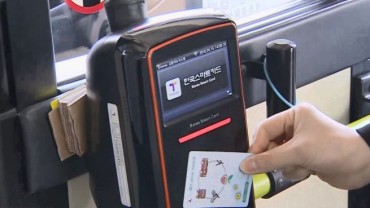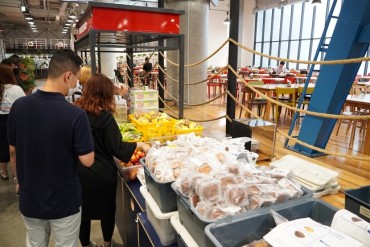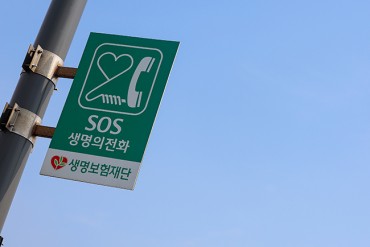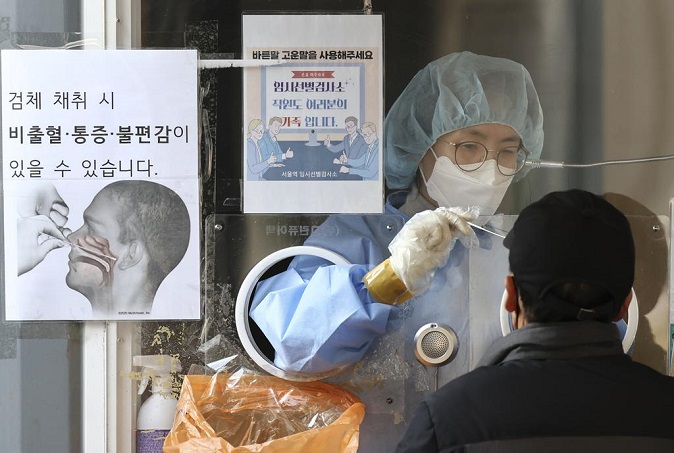
A health worker conducts a coronavirus test at a testing center at Seoul Station on March 8, 2022. (Yonhap)
SEOUL, March 8 (Korea Bizwire) — Severe and critical cases of COVID-19 in South Korea hit a two-month high Tuesday as the highly contagious omicron variant continued to spread rapidly across the country and fuel new outbreaks.
The country reported 202,721 new COVID-19 infections, including 202,647 local cases, raising the total caseload to 4,869,691, according to the Korea Disease Control and Prevention Agency (KDCA).
Severe and critical cases among those hospitalized for COVID-19 increased to a two-month high of 1,007, up 52 from a day ago. The number peaked on Dec. 29 with 1,151 cases.
The country reported more than 200,000 daily cases for five days in a row. The daily caseload surpassed 200,000 for the first time Wednesday and peaked on Friday with a record high of 266,850 cases.
As of 9 p.m., the country had added 326,834 new COVID-19 cases, a fresh record high for the timeframe, according to health authorities and city governments.
Daily COVID-19 cases in the capital city of Seoul also surged to 74,247 and breached the 70,000-mark for the first time, they said.
Daily cases are counted until midnight and announced the following morning.
The omicron variant has caused an unprecedented surge in COVID-19 cases in recent weeks. The total virus cases passed 4 million Saturday, just five days after reaching the 3 million mark. The country crossed the 1 million mark early last month, the KDCA said.
While omicron causes less severe symptoms than the delta variant, the sheer size of the omicron surge escalated COVID-19 deaths and hospitalizations.
The country added 186 more COVID-19 deaths, bringing the death toll to 9,282. The fatality rate was 0.19 percent.
On Monday, the KDCA raised the country’s risk level of the pandemic to the highest for the week ending Saturday, considering the number of critical cases, bed occupancy rates in intensive care units, and rates of patients aged 60 and above.
It had maintained the Level 4 of the five-tier system for the past six weeks.
As of Saturday, the omicron variant accounted for 100 percent of all locally transmitted cases confirmed in South Korea.
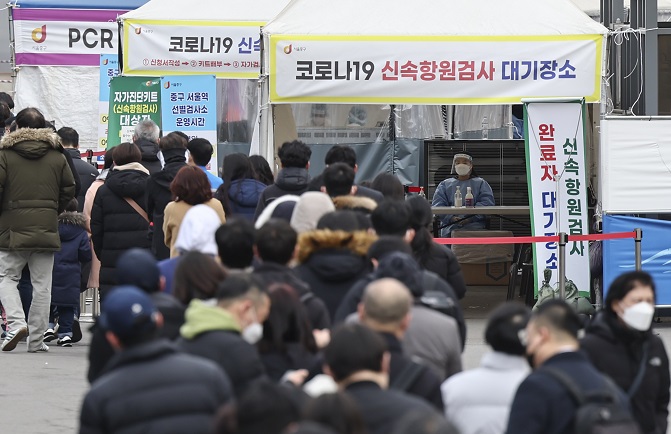
People stand in line to take coronavirus tests at a screening clinic in Seoul’s Songpa Ward on March 8, 2022. (Yonhap)
Facing a shortage of medical resources, the South Korean government has turned its focus to treating serious cases and preventing deaths, ending its rigorous contact tracing program.
It also increased the use of rapid antigen self-test kits and at-home treatment to prevent hospitals from being overwhelmed with COVID-19 patients.
Virus-related health protocols were eased, allowing cafes and restaurants to run until 11 p.m., starting Saturday, to reduce financial pain for small businesses. But private gatherings of more than six people are still prohibited.
Of the locally transmitted cases, Seoul reported 37,483 new cases. The surrounding Gyeonggi Province and the western city of Incheon added 52,729 and 12,603 new infections, respectively. Cases from overseas rose by 74 to a total of 29,906.
More than 1.16 million people are currently receiving at-home treatment, up 194,598 from a day earlier.
As of Tuesday, 31.8 million people, or 62.1 percent of the country’s 52 million population, had received booster shots. The number of fully vaccinated people came to 44.4 million, accounting for 86.5 percent, according to the KDCA.
Health authorities on Tuesday moved to assuage public anxiety over the rising number of critical cases and the capability of the country’s health system to cope with them.
“We believe the health system can manage up to 2,500 critical cases if we optimize the use of available resources,” Park Hyang, a high-ranking official at the KDCA, said during a daily coronavirus briefing.
“The rate of COVID-19 cases turning into severe cases stands at 0.34 percent, around one fifth of those from the delta era, and critically ill patients have been increasing slower than expected,” she said.
The government also said it was hiring more medical staff, with more than 200 new hires to be assigned to treat COVID-19 patients at local hospitals starting Saturday.
(Yonhap)




